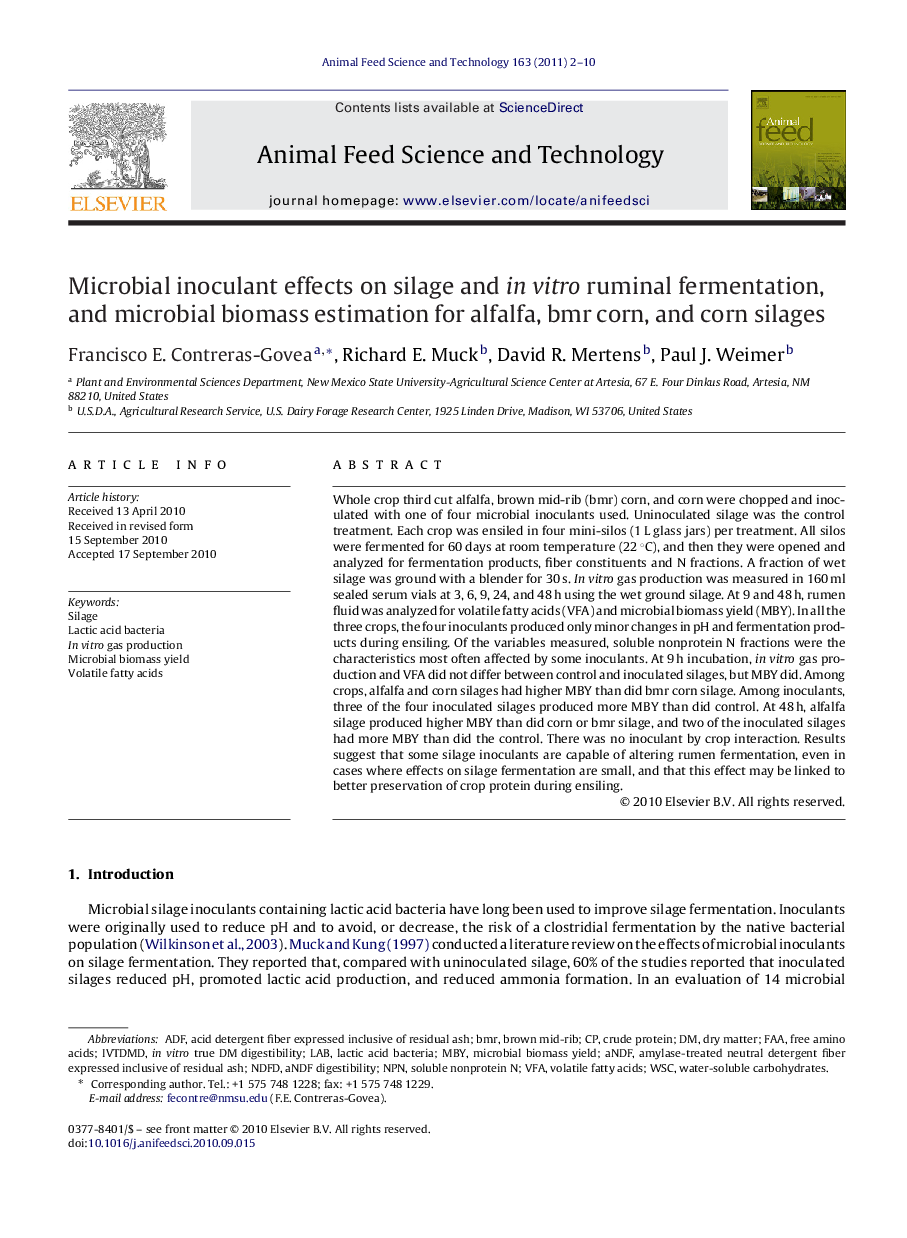| Article ID | Journal | Published Year | Pages | File Type |
|---|---|---|---|---|
| 2420012 | Animal Feed Science and Technology | 2011 | 9 Pages |
Whole crop third cut alfalfa, brown mid-rib (bmr) corn, and corn were chopped and inoculated with one of four microbial inoculants used. Uninoculated silage was the control treatment. Each crop was ensiled in four mini-silos (1 L glass jars) per treatment. All silos were fermented for 60 days at room temperature (22 °C), and then they were opened and analyzed for fermentation products, fiber constituents and N fractions. A fraction of wet silage was ground with a blender for 30 s. In vitro gas production was measured in 160 ml sealed serum vials at 3, 6, 9, 24, and 48 h using the wet ground silage. At 9 and 48 h, rumen fluid was analyzed for volatile fatty acids (VFA) and microbial biomass yield (MBY). In all the three crops, the four inoculants produced only minor changes in pH and fermentation products during ensiling. Of the variables measured, soluble nonprotein N fractions were the characteristics most often affected by some inoculants. At 9 h incubation, in vitro gas production and VFA did not differ between control and inoculated silages, but MBY did. Among crops, alfalfa and corn silages had higher MBY than did bmr corn silage. Among inoculants, three of the four inoculated silages produced more MBY than did control. At 48 h, alfalfa silage produced higher MBY than did corn or bmr silage, and two of the inoculated silages had more MBY than did the control. There was no inoculant by crop interaction. Results suggest that some silage inoculants are capable of altering rumen fermentation, even in cases where effects on silage fermentation are small, and that this effect may be linked to better preservation of crop protein during ensiling.
